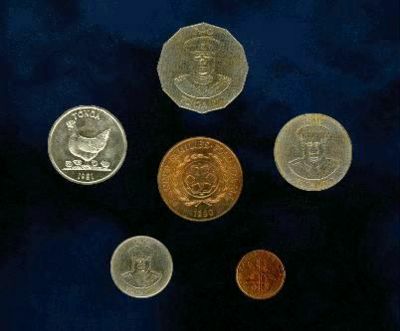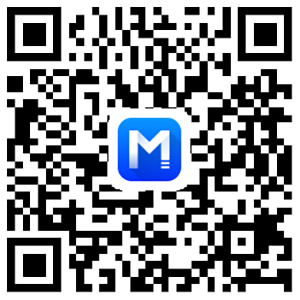汤加潘加
出自 MBA智库百科(https://wiki.mbalib.com/)
汤加潘加(Tongan pa'anga/Tonga Pa'anga/Tonga paʻanga (Tongan) 标准符号:TOP)
目录 |
ISO 4217 Code:TOP
User(s):Tonga
Inflation:11.1%
Source:The World Factbook, 2005 est.
Superunit:100 hau
Subunit:1/100 seniti
Symbol:T$ (sometimes PT)
seniti:¢
Coins:
Freq. used:5¢, 10¢, 20¢, 50¢
Rarely used:1¢, 2¢
Banknotes:T$1, T$2, T$5, T$10, T$20, T$50
Central bank:National Reserve Bank of Tonga
Website:http://www.reservebank.to
The paʻanga is the currency of the Kingdom of Tonga. It is controlled by National Reserve Bank of Tonga (Pangikē Pule Fakafonua ʻo Tonga) in Nukuʻalofa. The paʻanga is not convertible and is pegged to a basket of currencies comprising the Australian, New Zealand, and United States dollars and the Japanese yen.
One paʻanga equals one hundred seniti, the ISO code is TOP and the usual abbreviation is T$ (¢ for seniti). In Tonga the paʻanga is often referred to in English just as dollar and the seniti as cent. There is also the unit of hau (1 hau = 100 paʻanga), but this is not used in every day life and can only be found on commemorative coins of higher denominations.
Etymology
Entada scandens, native name paʻanga, is a bean-like vine producing large pods with large reddish brown seeds. The seeds are roundish, up to 5 cm diameter and 1 or 2 cm thick. When strung together they are used as anklets, part of the kailao dance costume. They were also used as playing pieces in an ancient disc-throwing game, lafo.
On 1 December 1806 Tongans attacked the passing ship Port-au-Prince in order to take it over. They failed, as the crew sank the vessel. The chief of Haʻapai, Fīnau ʻUlukālala, resorted to the next plan, plunder what ever was worthwhile. On his inspection tour he found the ship's cash. Not knowing what money was he considered the coins as paʻanga. Finally, not seeing anything of value, he ordered the remains of the ship to be burned. It was much later that William Mariner, the only survivor of this attack, told him that those pieces of metal were of great value and not merely playing stones.
When Tonga introduced decimal currency, it decided not to call the main unit the dollar because the native word, tola, translated into a pig's snout, the soft end of a coconut, or, in vulgar language, a mouth. Pa'anga, on the other hand, translated into money.
Mariner also passed down the following statement of Fīnau ʻUlukālala:
If money were made of iron and could be converted into knives, axes and chisels there would be some sense in placing a value on it; but as it is, I see none. If a man has more yams than he wants, let him exchange some of them away for pork. [...] Certainly money is much handier and more convenient but then, as it will not spoil by being kept, people will store it up instead of sharing it out as a chief ought to do, and thus become selfish. [...] I understand now very well what it is that makes the papālangi [white men] so selfish — it is this money!
History
The paʻanga was introduced on 3 April 1967. It replaced the pound at a rate of 1 pound = 2 paʻanga. Until 11 February 1991 the pa'anga was pegged to the Australian dollar at par. Since that time a basket of currencies is taken (see above), and the paʻanga has continuously declined. As in 2006, one needs about T$1.60 to get 1 Australian dollar. Official exchange rates are released daily by the National Reserve Bank, established 1 July 1989, but rather towards the end of the day than early in the morning. In practice, it seems, that the real exchange rate is rather determined by the fancy of the higher echelons than the basket.
Coins
Coins come in denominations of one, two, five, ten, twenty and fifty seniti. Most coins feature the king in military uniform in front looking forwards and the writing Fakalahi meʻakai (Tongan, "Grow more food") with a food plant in the back. A specialty is the dodecagonal 50¢ coin (all other coins are round). The one and two seniti coins are becoming less common nowadays, as they loose value due to a yearly inflation of about 10%, and are only readily available for some months after a release by the bank. Total prices in shops are usually rounded to the nearest 5 or 10 seniti. Some shops believing that to round means always to round up.
In former times there were also some T$1,T$2 and T$3 coins circulating, but these are now considered to be collector's items.
As late as 1967 (she died in 1965) Queen Salote Tupou III looking to the right, appeared on the coins instead of the current king, who, on the coins before 1980, was looking to the left.
Banknotes
Bank notes come in denominations of 1, 2, 5, 10, 20, and 50 paʻanga. The latter was introduced around 1990. The turquoise, half paʻanga note, featuring copra making on the back, was discontinued around 1980.
The obverse of the notes is held in Tongan language and shows the portrait of King Taufa'ahau Tupou IV. The reverse is in English language and shows typical motives and landmarks of Tonga: the Haʻamonga ʻa Maui Trilithon, the royal palace, the Tongan Development Bank, the Port of Vavaʻu (twice, once as it was around 1900, and the other contemporary), and ngatu making.



























经典